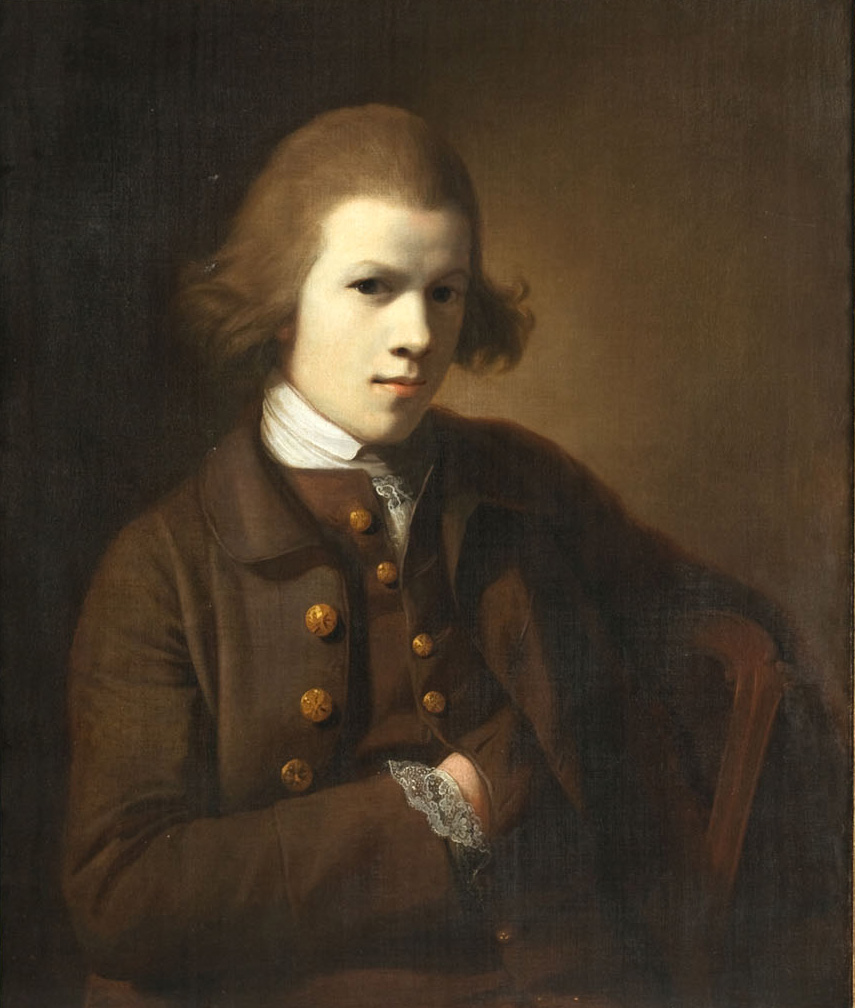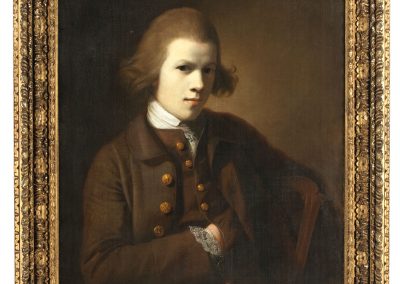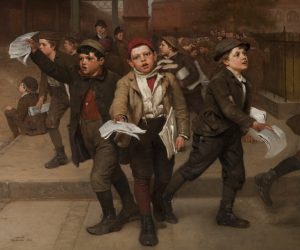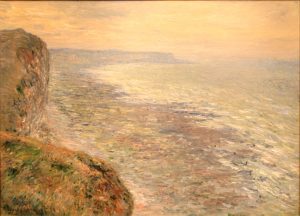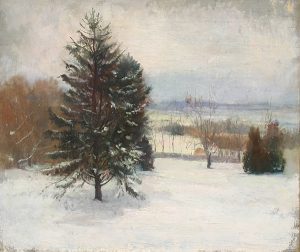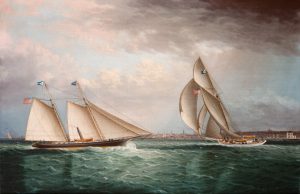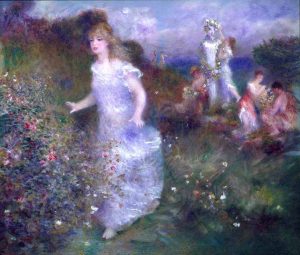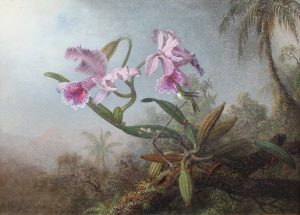Benjamin West (1738-1820)
BENJAMIN WEST
(American, 1738-1820)
American-born Benjamin West was considered the most prominent artist in the English-speaking world of the late Eighteenth Century. Born in 1738 near Springfield, Pennsylvania, the youngest of ten children, West manifested a talent for painting at an early age, and was encouraged to draw by his parents. By the age of fifteen he was already recognized for his talent in portraiture, and by 1756 had attracted the attention of Dr. William Smith, provost of the College of Philadelphia, who enrolled him in the school and devised a special program of classical studies for him. These early studies inspired West to become a history painter. In 1760 he left America, becoming the first American artist to study in Italy. West embraced the Neo-classical movement emerging in Europe at the time. He studied painting in Italy for three years, primarily in Rome, Florence, and Venice, then settled in London. King George III commissioned the first of many paintings from West in 1768, and appointed him a charter member of the Royal Academy of Arts that same year. By 1772 West had been made royal historical painter, and by 1801 had completed approximately sixty paintings for the king, including family portraits and eight paintings from English history for the Audience Chamber. West also produced a series of religious paintings for the Royal Chapel, and designs for stained glass and an altarpiece for St. George’s Chapel, at Windsor Castle. In 1792 he succeeded Joshua Reynolds and became the second President of the Royal Academy, a position he held until his death. His works were exhibited frequently at the Academy. Besides his royal commissions, he received many commissions from other English patrons, and at the same time served as teacher to American artists in London, keeping an open-door policy for artists traveling abroad, providing them with lodging, studio instruction, and access to the Royal Academy, galleries and collections. Among his students were Charles Willson Peale, Gilbert Stuart, John Trumbull, Ralph Earl, Washington Allston, Thomas Sully, and Samuel F. B. Morse. Among West’s best-known works are “William Penn’s Treaty with the Indians” (1771-72), “The Death of General Wolfe” (1770), and “Death on the Pale Horse” (1796). West died in London in 1820, and is buried in St. Paul’s Cathedral.
Sir William Young
by Benjamin West (1738-1820)
| Medium | Oil |
| Medium Detail | Oil on canvas |
| Dimensions | 30 x 25 inches |
| Date Created | circa 1767 |
| Provenance | By descent from William Young's sister, Sarah Elizabeth, wife of Richard Ottley, to William Ottley; Thos. Agnew & Sons, London, 1920; Kraushaar Galleries, New York; Doll & Richards, Boston, 1922; Elizabeth Wentworth Roberts, Concord, Massachusetts; Concord Art Association, 1923; Vose Galleries, Boston, 1975; George C. Seybolt, Dedham, MA; Estate of George C. Seybolt, Sold at Northeast Auctions, NH, February 24, 2008; William Vareika Fine Arts, Ltd., Newport, RI. |
| Literature | Helmut von Erffa and Allen Staley, "The Paintings of Benjamin West,” Yale University Press, New Haven & London, 1986, p. 570, no. 725. |
| Comments | Exhibited: "Memorial Exhibition: Benjamin West," The Art Alliance, Philadelphia, Nov. 28, 1921 - Jan. 2, 1922, no. 21; "Exhibition of Paintings and Drawings by Benjamin West," Brooklyn Museum, 1922, no. 16; “Benjamin West: 1738 – 1820,” Pennsylvania Museum of Art, Philadelphia, 1938, no. 38. Note: William Young (1749-1815), 2nd Baronet, was an author, watercolorist, member of Parliament and Colonial Governor of Tobago, West Indies. West painted two versions of Young's portrait during the time the sitter attended Eton; one was a "leaving" portrait, given to the school and still in the permanent collection of Eton College; the other was painted for the sitter's family. |
This artwork is no longer in our inventory
Contact Us About This Piece

